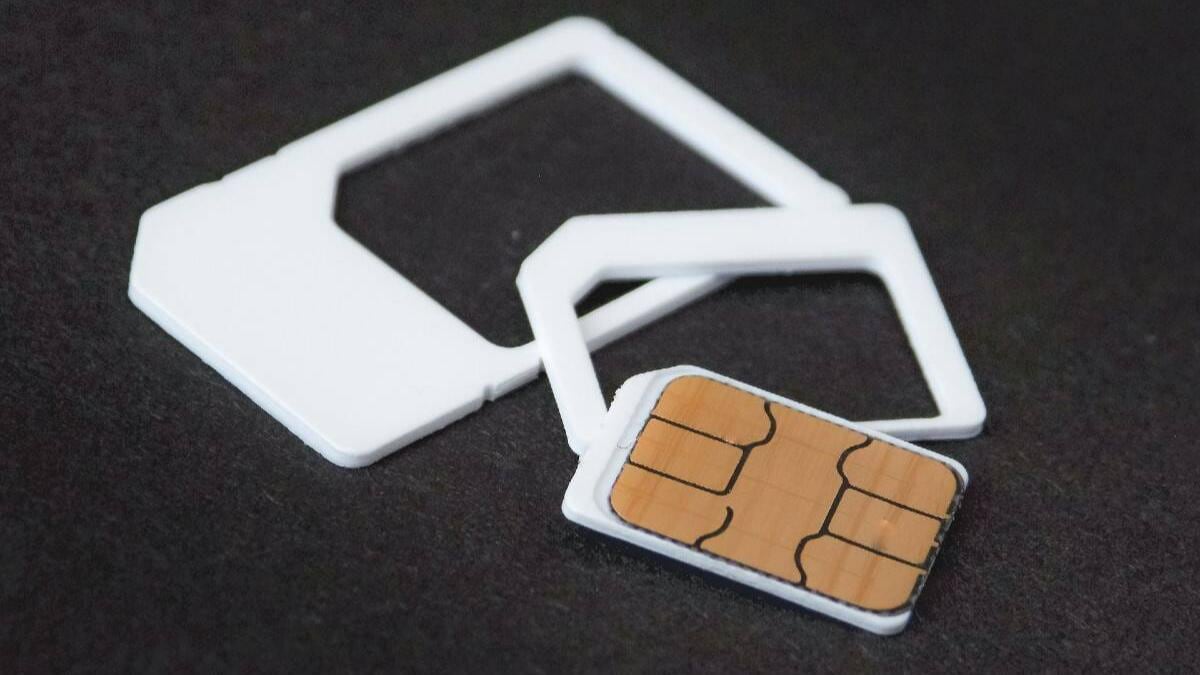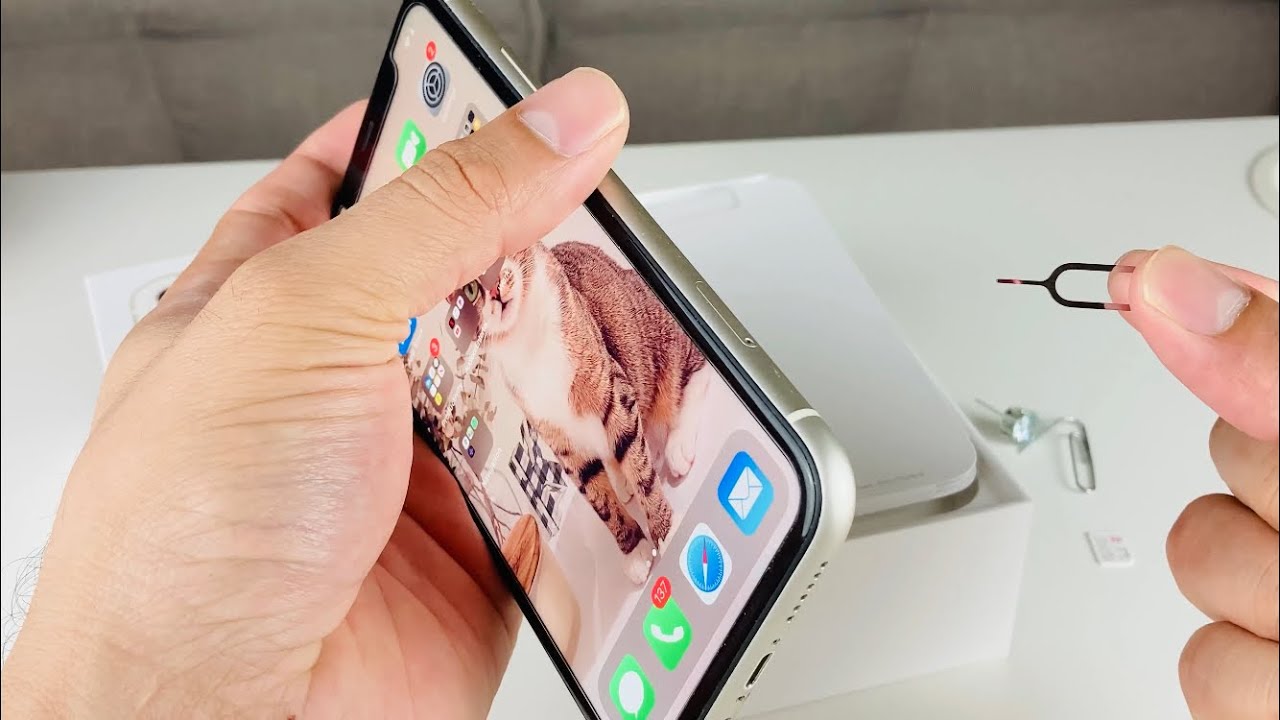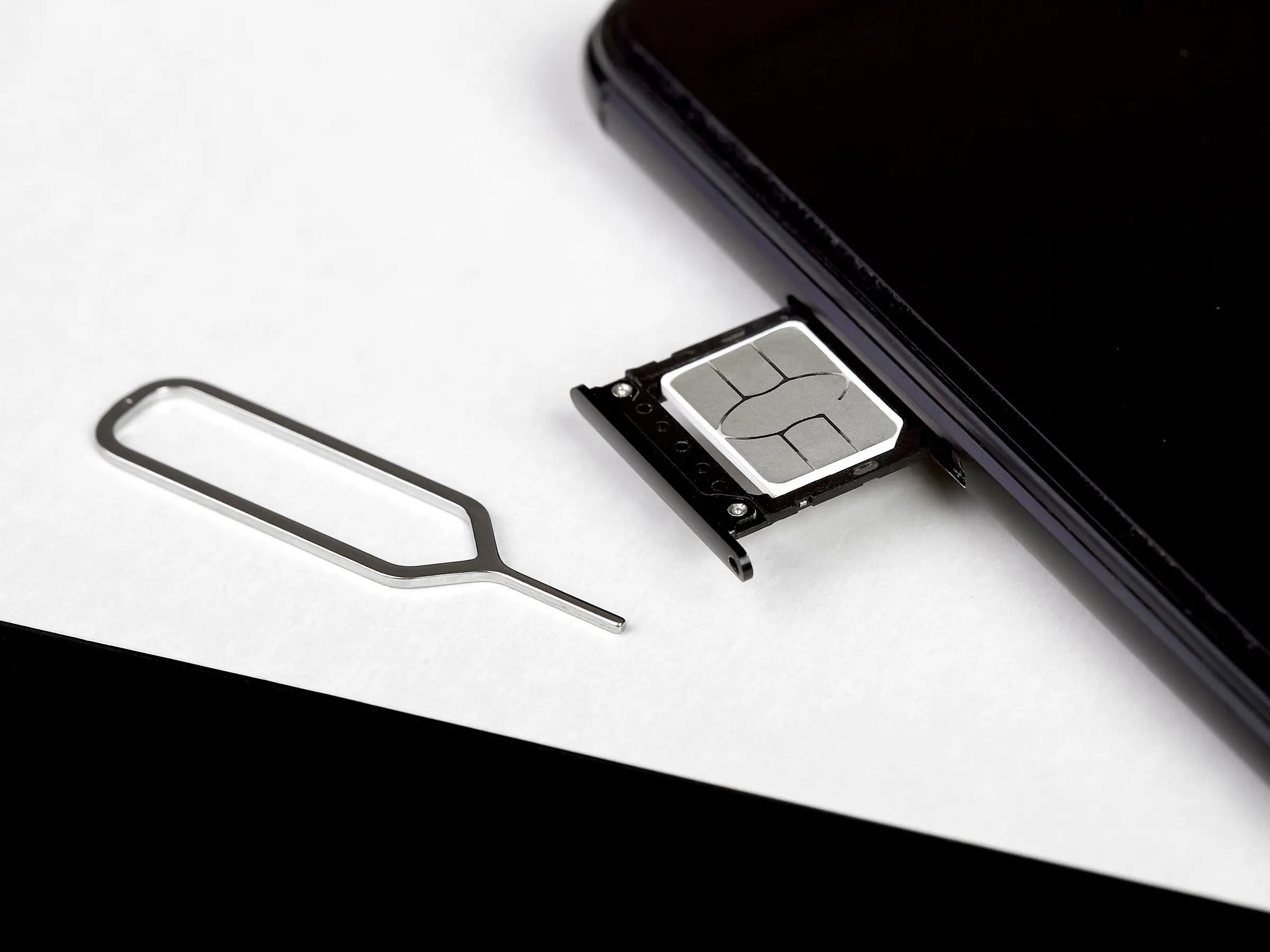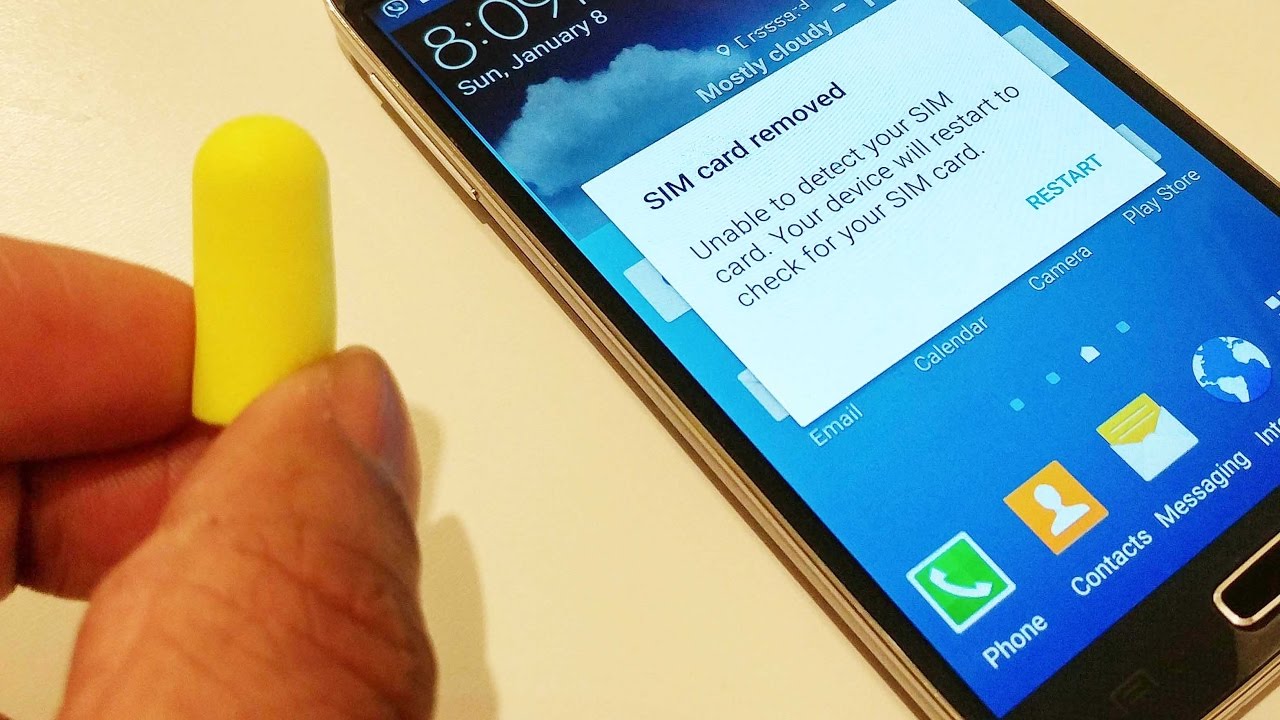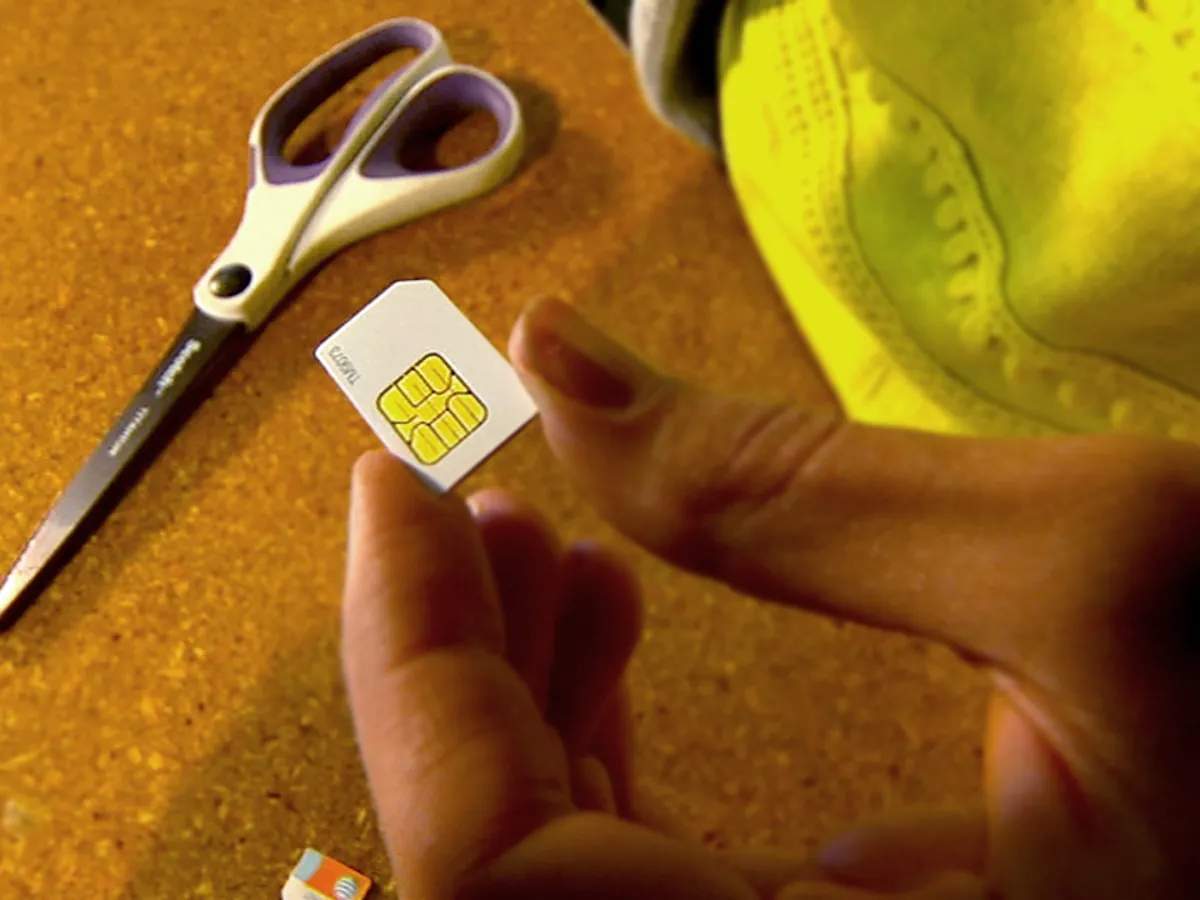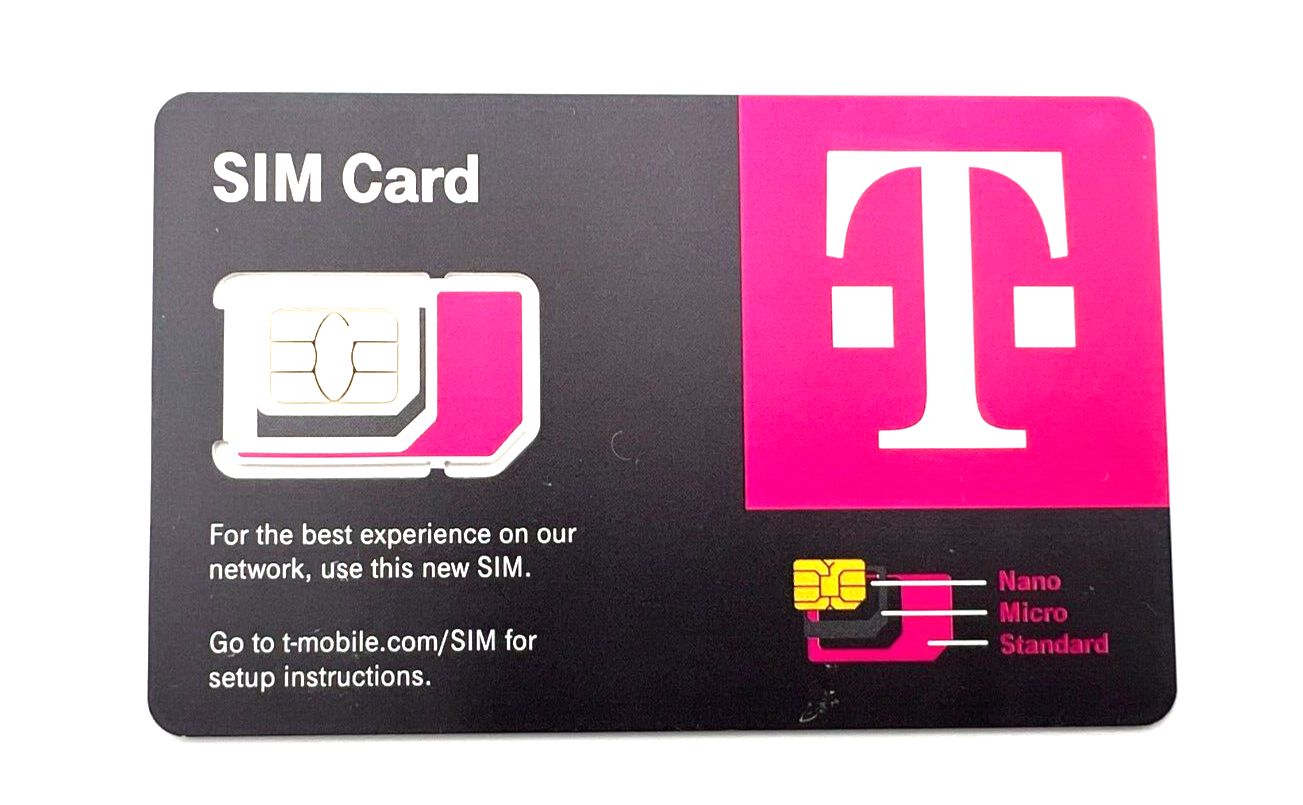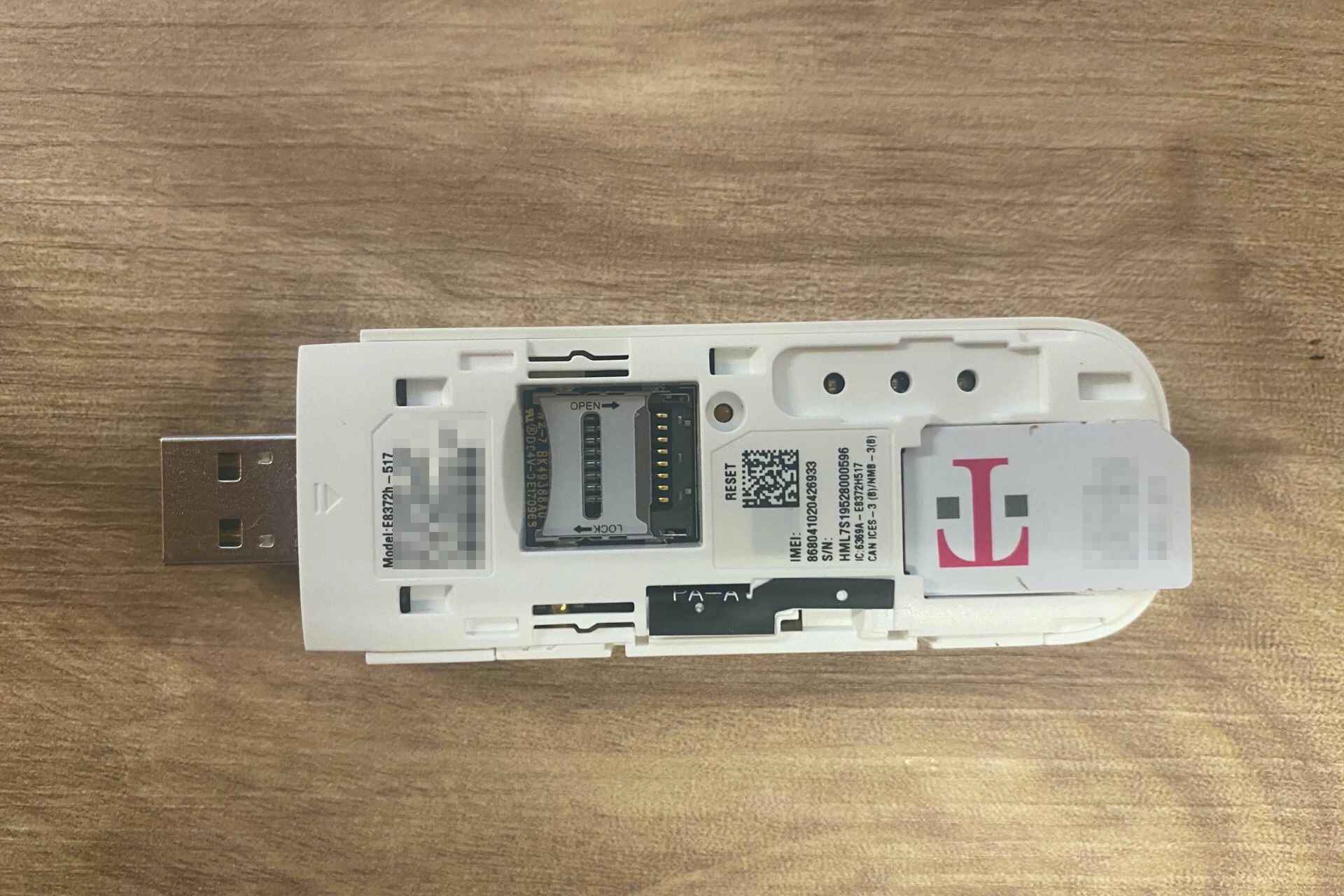Introduction
When setting up a new mobile device or troubleshooting connectivity issues, checking for the presence of a SIM card is a crucial first step. The Subscriber Identity Module (SIM) card is a small, removable card that stores essential information such as the user's identity, network authentication, and stored contacts. Without a properly inserted SIM card, a mobile device may not be able to connect to a cellular network or access essential features such as making calls or sending text messages.
Ensuring that a SIM card is securely in place is especially important when encountering issues such as "No SIM card detected" or "No service" messages on the device. By following a few simple steps, you can quickly determine whether the SIM card is the root cause of the problem and take appropriate action to resolve it.
In this guide, we will walk through the essential steps to check for the presence of a SIM card in a mobile device. Whether you're setting up a new phone, troubleshooting connectivity issues, or simply ensuring that everything is in working order, these steps will help you verify the presence of a SIM card and take the necessary actions to ensure seamless connectivity. Let's dive into the process of checking for a SIM card and ensure that your mobile device is ready to keep you connected at all times.
Step 1: Locate the SIM card slot
The first step in checking for the presence of a SIM card in a mobile device is to locate the SIM card slot. The location of the SIM card slot varies depending on the make and model of the device, but it is commonly found either on the side of the device or beneath the back cover and battery.
For many modern smartphones, the SIM card slot is typically located on the side of the device. Look for a small tray with a pinhole or a slot that can be accessed using a SIM card ejection tool or a paperclip. Some devices may have the SIM card slot located at the top or bottom edge, so it's essential to carefully inspect the device to identify the exact location of the slot.
In contrast, older or budget-friendly smartphones may feature a removable back cover, under which the battery and SIM card slot are housed. In such cases, gently remove the back cover by applying pressure to the designated release points or using a small indentation provided for this purpose. Once the back cover is removed, the SIM card slot, along with the battery and potentially the microSD card slot, will be visible.
It's important to handle the device with care and refer to the user manual if you're unsure about the location of the SIM card slot. Manufacturers often provide detailed instructions and illustrations to guide users through this process.
By successfully locating the SIM card slot, you are ready to proceed to the next step of checking for the presence of the SIM card. This initial step sets the stage for the subsequent actions required to ensure that the SIM card is securely in place and functioning as intended. Once the SIM card slot is identified, you can move on to the next steps with confidence, knowing that you are on the right track to verify the presence of the SIM card in your mobile device.
Step 2: Power off the device
Before proceeding to check for the presence of a SIM card in your mobile device, it is essential to power off the device. This step is crucial to ensure the safety of both the device and the user while handling the SIM card and accessing the SIM card slot.
Powering off the device helps prevent any potential damage that may occur if the device is powered on during the SIM card inspection process. By turning off the device, you minimize the risk of accidental damage to the SIM card or the device's internal components. Additionally, powering off the device creates a safe environment for handling the SIM card, reducing the likelihood of interference with the device's operations.
To power off your device, follow these general steps:
-
For most smartphones, press and hold the power button located on the side or top of the device until the power-off menu appears on the screen.
-
Once the power-off menu is displayed, select the "Power off" or "Turn off" option to initiate the shutdown process. The device will then power down, and the screen will go blank.
-
If your device has a physical home button, you may need to press and hold it along with the power button to initiate the power-off sequence.
-
For devices with non-removable batteries, powering off the device is the only way to ensure that it is completely turned off before proceeding with the SIM card inspection.
By following these steps to power off your device, you create a safe environment for the subsequent steps of checking for the SIM card. This simple yet essential precautionary measure helps safeguard the integrity of the device and the SIM card, setting the stage for a smooth and secure SIM card inspection process.
Once the device is powered off, you are ready to proceed to the next steps of removing the back cover (if applicable) and accessing the SIM card slot. With the device safely powered off, you can confidently continue the process of checking for the presence of the SIM card and take the necessary actions to ensure seamless connectivity and functionality.
Step 3: Remove the back cover (if applicable)
In some mobile devices, particularly older models and certain budget-friendly smartphones, the SIM card slot is located beneath a removable back cover. If your device falls into this category, the next step in checking for the presence of a SIM card involves carefully removing the back cover to access the SIM card slot.
To begin, locate the designated release points or indentations on the edges of the device's back cover. Manufacturers often provide subtle cues, such as small notches or tiny arrows, to indicate where pressure should be applied to detach the back cover. These indicators are typically found along the seams or edges of the device, serving as guides for users to remove the cover with ease.
Once the release points are identified, gently apply pressure to the specified areas to initiate the release of the back cover. It's important to exercise caution and avoid using excessive force to prevent damage to the cover or the device itself. Applying even pressure and using your fingertips to guide the removal process can help ensure a smooth and controlled detachment of the back cover.
As the back cover begins to loosen, continue to carefully work your way around the edges, gradually separating the cover from the main body of the device. Take your time and proceed methodically, being mindful of any resistance or unexpected obstacles that may require further assessment.
Once the back cover is successfully removed, you will gain access to the device's internal components, including the battery, SIM card slot, and potentially the microSD card slot. At this stage, it's essential to handle the exposed components with care, avoiding unnecessary contact or manipulation that could compromise their integrity.
By following these steps to remove the back cover, you create a pathway to access the SIM card slot and proceed with the inspection process. This careful and deliberate approach sets the stage for the subsequent steps of checking for the presence of the SIM card and ensuring that it is securely in place within the device.
With the back cover removed, you are now ready to proceed to the next steps of removing the battery (if applicable) and locating the SIM card. This progression brings you closer to verifying the presence of the SIM card and taking the necessary actions to ensure optimal connectivity and functionality of your mobile device.
Step 4: Remove the battery (if applicable)
In some mobile devices, particularly those with removable back covers, the SIM card slot is positioned beneath the battery. If your device falls into this category, the next crucial step in the process of checking for the presence of a SIM card involves carefully removing the battery to access the SIM card slot.
To initiate the battery removal process, locate the designated release points or mechanisms designed to secure the battery within the device. These may include small latches, sliding locks, or spring-loaded mechanisms that hold the battery in place. Manufacturers often provide clear visual cues or markings near the battery compartment to guide users in safely removing the battery.
Once the release points are identified, use gentle and deliberate movements to disengage the battery from its housing. Depending on the device, this may involve sliding the battery out, pressing a release button, or carefully lifting it from its compartment. It's essential to exercise caution and avoid using excessive force to prevent damage to the battery or the device's internal components.
As the battery is carefully removed, take note of its orientation and position within the device. Some batteries may have specific alignment markers or contacts that need to be considered when reinserting them later. By paying attention to these details during the removal process, you can ensure a smooth and seamless reassembly of the device once the SIM card inspection is complete.
With the battery successfully removed, the SIM card slot will be fully accessible, allowing you to proceed with the next steps of checking for the presence of the SIM card. This careful and methodical approach sets the stage for a thorough inspection of the SIM card slot and the verification of the SIM card's presence within the device.
By following these steps to remove the battery (if applicable), you create a clear pathway to access the SIM card slot and proceed with the essential task of verifying the presence of the SIM card. This progression brings you closer to ensuring that the SIM card is securely in place within the device, setting the stage for seamless connectivity and optimal functionality.
With the battery removed, you are now ready to proceed to the next steps of locating the SIM card and checking for its presence. This progression brings you closer to completing the process of verifying the SIM card's presence and taking the necessary actions to ensure that your mobile device is ready to keep you connected at all times.
Step 5: Locate the SIM card
With the back cover and, if applicable, the battery removed, the next crucial step is to locate the SIM card within the mobile device. The SIM card is a small, rectangular card that is typically positioned in close proximity to the battery compartment, within the SIM card slot. It is essential to handle the SIM card with care and attention to detail to avoid any damage to the card or the device's internal components.
The SIM card slot is designed to securely hold the SIM card in place, ensuring proper connectivity and functionality. When locating the SIM card, look for a small tray or holder within the device that is specifically designed to accommodate the SIM card. The tray or holder may have markings or diagrams indicating the correct orientation for inserting the SIM card, providing guidance for users during the inspection process.
Upon identifying the SIM card slot, carefully observe the position and alignment of the slot in relation to the other internal components of the device. Take note of any additional slots or compartments adjacent to the SIM card slot, as some devices may feature multiple slots for SIM cards or integrated memory cards. This observation is particularly important when handling devices that support dual SIM functionality, as it ensures that the correct SIM card slot is identified for inspection.
As you locate the SIM card within the device, pay attention to any relevant markings or labels that may be present on the SIM card itself. These markings often include the manufacturer's logo, the card's serial number, and other identifying information. By noting these details, you can verify that the SIM card in question matches the specifications and requirements of the device, further ensuring its compatibility and proper functionality.
By successfully locating the SIM card within the device, you are one step closer to verifying its presence and ensuring that it is securely in place. This careful and meticulous approach sets the stage for the subsequent steps of checking for the SIM card's presence and taking the necessary actions to ensure seamless connectivity and optimal functionality of your mobile device.
Step 6: Check for the SIM card presence
After successfully locating the SIM card within the device, the next crucial step is to check for the actual presence of the SIM card. This involves visually inspecting the SIM card slot to determine whether the SIM card is securely inserted and properly aligned within the designated slot.
Begin by carefully examining the SIM card slot to assess whether a SIM card is already present. In some cases, the SIM card may be partially inserted or not seated correctly within the slot, leading to connectivity issues or a complete loss of network signal. By visually inspecting the slot, you can quickly determine whether the SIM card is in place or if further action is required.
When checking for the SIM card presence, pay attention to the alignment and orientation of the SIM card within the slot. The SIM card should fit snugly into the designated space, with the gold contacts facing downward and the notched corner matching the corresponding guide within the slot. Any deviation from this proper alignment may indicate that the SIM card needs to be repositioned or reinserted to ensure a secure and functional connection.
In addition to visual inspection, gently push the SIM card to ensure that it is firmly seated within the slot. A properly inserted SIM card should remain in place without any movement or protrusion from the slot. This tactile confirmation helps verify the secure placement of the SIM card and provides reassurance that it is ready to facilitate network connectivity and communication functions.
Furthermore, take note of any resistance or unusual feedback when checking the SIM card's presence. If the SIM card encounters significant resistance during insertion or removal, it may indicate a potential issue with the slot or the SIM card itself, requiring further attention and potential troubleshooting steps.
By thoroughly checking for the SIM card's presence and ensuring its secure placement within the slot, you can take proactive measures to address any potential connectivity issues and ensure that the device is ready to access cellular networks and essential communication services.
With the SIM card presence confirmed and its secure placement verified, you are now prepared to proceed with the reassembly of the device, completing the essential steps to check for the presence of a SIM card and ensuring seamless connectivity and functionality.
Step 7: Reassemble the device
With the SIM card presence confirmed and its secure placement verified, the final step in the process of checking for the presence of a SIM card involves reassembling the device. This critical step ensures that the device is restored to its original state, with the back cover, battery (if applicable), and any additional components securely in place.
To begin the reassembly process, carefully align the back cover with the main body of the device, taking note of any guiding features or notches that facilitate a proper fit. Gently press the edges of the back cover to secure it in position, ensuring that it sits flush and even with the device's frame. By applying uniform pressure, you can ensure that the back cover is firmly attached, providing protection and stability for the internal components.
If the device features a removable battery, carefully reinsert it into its designated compartment, paying attention to the alignment and orientation of the battery. Ensure that the battery is securely seated and that any locking mechanisms or latches are engaged to prevent any movement or dislodgment during use. By following the manufacturer's guidelines for battery reinsertion, you can maintain the integrity of the device and ensure optimal performance.
Once the back cover and, if applicable, the battery are securely reassembled, take a moment to inspect the overall condition of the device. Check for any gaps, misalignments, or irregularities that may indicate incomplete reassembly, addressing any issues promptly to guarantee the device's structural integrity.
With the device successfully reassembled, power it on to verify that the SIM card is recognized and that the device connects to the cellular network without any issues. Upon powering on the device, monitor the signal strength and network connectivity indicators to ensure that the SIM card is functioning as intended.
By completing the reassembly process, you finalize the essential steps to check for the presence of a SIM card and ensure that the device is ready to keep you connected at all times. This thorough and methodical approach sets the stage for seamless connectivity and optimal functionality, allowing you to use your mobile device with confidence and peace of mind.
With the device fully reassembled and the SIM card presence verified, you have successfully completed the process of checking for the presence of a SIM card in your mobile device. By following these essential steps, you can address connectivity issues, set up a new device, or ensure that your mobile device is in proper working order, empowering you to stay connected and engaged in today's interconnected world.
Conclusion
In conclusion, the process of checking for the presence of a SIM card in a mobile device is a fundamental task that ensures seamless connectivity and optimal functionality. By following the essential steps outlined in this guide, users can confidently address connectivity issues, set up new devices, or verify the proper insertion of the SIM card, ultimately empowering them to stay connected in today's interconnected world.
The journey begins with locating the SIM card slot, a crucial step that sets the stage for the subsequent actions. Whether the SIM card slot is located on the side of the device or beneath a removable back cover, identifying its position is essential to proceed with confidence.
Powering off the device is a crucial safety measure that creates a secure environment for handling the SIM card and accessing the SIM card slot. By following the recommended steps to power off the device, users minimize the risk of accidental damage and interference with the device's operations.
The process continues with the careful removal of the back cover and, if applicable, the battery, providing access to the SIM card slot and setting the stage for the inspection process. Locating the SIM card within the device and checking for its presence involves meticulous observation and tactile confirmation, ensuring that the SIM card is securely in place and ready to facilitate network connectivity.
The final step of reassembling the device completes the comprehensive process, restoring the device to its original state and verifying the proper recognition of the SIM card upon powering on the device. By completing the reassembly process, users can enjoy peace of mind, knowing that their mobile device is ready to keep them connected at all times.
In essence, the process of checking for the presence of a SIM card is not only about verifying the physical presence of the card but also about ensuring that the device is in proper working order, ready to leverage the full potential of cellular networks and communication services. By following these essential steps, users can navigate the intricacies of mobile device setup and troubleshooting with confidence, empowering them to embrace the interconnected world with seamless connectivity and uninterrupted communication.







